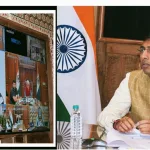A 6.8 magnitude earthquake with its epicenter in Hindu Kush of Afghanistan region rocked the UT on Tuesday. This time around the quake was felt in several north Indian states besides the neighboring countries of India that is Afghanistan and Pakistan. The valley has been experiencing light to moderate intensity earthquakes regularly over the years. There has been no loss of life so far, but since the valley lies in the highly earthquake-prone Seismic Zone IV and V, there is no room for complacency. Kashmir, or for that matter any place on earth, cannot afford to ignore the threat of such disasters. However, the officials here seem to pay no heed to concerns expressed by the experts about the possibility of a major earthquake in the valley. Our subject experts have been raising the alarm bells every now and then, and sometimes we come across references to safety measures from administration also. But all this has a transitory effect on us and we keep moving ahead completely forgetting the warnings that anytime an intense earthquake can turn our dwellings topsy-turvy. Many experts are of the opinion that government should implement guidelines framed by Urban Earthquake Vulnerability Reduction Project. The loss of life and property can be decreased significantly if these guidelines are adopted for quake-resistant constructions. Though it is not possible to avert natural disasters like earthquakes, there is a scope for minimizing the damage. The reactionary approach of previous governments has meant that the UT is ill-prepared to deal with the disasters. We still lag behind as far as preparedness in terms of implementation or operational capacities is concerned. Lack of political will and an attitude of indifference by people only accentuate the problem. The authorities have also not been able to make use of the scientific studies for developing effective strategies to prevent widespread damage and fatalities during the disasters. It is imperative for the UT administration to shun the complacency and gear up man and machinery to cope with both natural as well as man-made disasters. There is an urgent need to establish early warning systems. Also, decentralization of disaster management plans and disaster education to increase public awareness is also crucial for successful implementation of the disaster management guidelines. Strong political will and public cooperation must go hand in hand to ensure success of disaster management plans. Earthquakes may wake and shake us again, any time, during day or night – as Jammu and Kashmir is not far from the seismic fault lines. Administration, civil society and people must join hands to prepare the people to accept such eventualities and find ways to survive the initial panic waves that result in trauma induced injuries like heart attacks.





